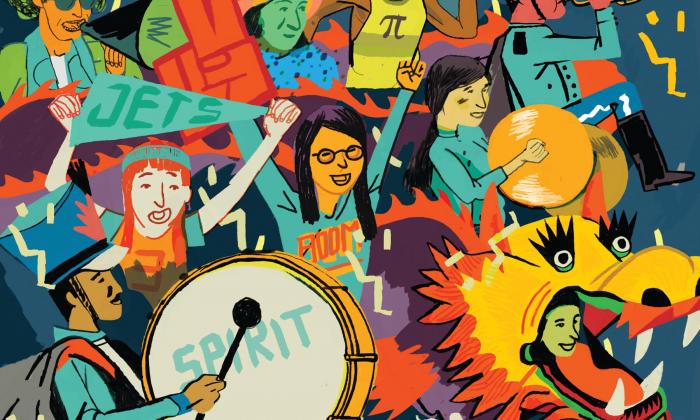
Q: Our school sponsored a “Redneck Day” during spirit week. An African-American parent complained about a student wearing a T-shirt emblazoned with the Confederate battle flag. It was all in fun. Any advice?
One of the most important principles for school leaders is a version of the doctor’s oath to do no harm. A corollary might be: Don’t poke fun at anyone.
Yet for spirit week, in the hope of promoting unity, schools routinely sponsor events that rely on stereotypes—encouraging students to dress like nerds, rednecks or hillbillies. When school leaders approve such plans, they invite students to take lightly things that should be taken seriously—stereotypes, slurs and powerful symbols.
Our advice is to consider initiating a dialogue among students about the power of symbols and find ways to bolster school spirit without drawing on divisive stereotypes.
Humanizing Spirit Days and Pep Rallies
While spirit days and pep rallies can energize a school and the student body, they can fray the nerves of educators and infuse the student body with negative messages. Consider:
- Cheerleaders at a Texas high school pretended to gun down other cheerleaders dressed in rival school colors.
- A white junior at a Utah high school, dressed in the class color of white for the annual “spirit bowl,” covered his head in a KKK-like hood and allegedly taunted a mixed-race classmate.
- A Minnesota school district was sued by the family of a distressed black student for not blocking an unofficial spirit event known as “Wigger Wednesday,” when white students dressed up in caricatures of African-American fashion.
- The seemingly ubiquitous cross-dressing male athletes who sport huge rubber-ball breasts.
Helping kids and teens develop tolerance and sensitivity toward others is rarely an easy task. This can be especially true in communities with limited exposure to people of other backgrounds and ethnicities. In the unkind or naïve hands of young minds, intentions can wander off into the weeds of bad judgment and bigotry.
Heavy-handed censorship is rarely the best answer. It can cause students to sweep unexamined attitudes under the rug of teacher-approved behavior. Instead, savvy club advisers can offer adult reflection and guidance to student groups about the appropriateness of their skits or other public displays of school spirit.
One insightful exercise is to ask students to research rivalry-gone-wrong events like those noted above. As a group, they can analyze why these incidents generated so much controversy. Stimulate students’ critical thinking skills as well as compassion with this question: “Does our idea single out people and portray their identity—race, religion, class, gender, intellectual ability or sexuality—as inferior or laughable?”
If the answer is yes, or even maybe, then students should be urged to go back to the drawing board.
Q: Can empathy be taught?
Yes. We can teach empathy by attending to social emotional learning. Many studies point the way.
First, let’s be clear about what we mean.
Empathy, broadly speaking, is recognizing another person’s feelings, thoughts and motivations. Feeling empathy is what we commonly call “walking in another person’s shoes.” Experts like Dr. Daniel Goleman have identified different kinds of empathy. Emotional empathy is actually feeling what others are feeling. We often experience emotional empathy when we watch sad movies, see other people cry or hear about national tragedies.
Cognitive empathy is the ability to appreciate—without reacting emotionally—how another person sees a situation.
Compassionate empathy or empathetic concern arises when emotional and cognitive empathy team up to produce a desire to do something. This is the concept we want to encourage in students and nurture in ourselves.
The way to teach empathy is to embed social emotional learning into the curriculum. Teach children to listen to others and to ask questions. Talk about how characters in literature or film might experience the world. Bring multiple perspectives and stories into the study of history. Employ lots of cooperative learning and teamwork in class. And help students learn to talk about their roles, challenges and what they need. Always remind students that everybody has different thoughts, feelings and perspectives and that those of others are just as valid as their own.